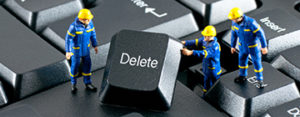A repair in Fulbourn today, where we are based! The laptop’s hard drive was failing, so I had to bring it back to the workshop to recover the data. A new fast solid state hard drive was fitted and Windows 10 installed. Any necessary software was installed and the customer’s data was migrated back to the new hard drive.
The more old-fashioned types of hard drive are very slow due to having to rely on a physical process which takes time. However the more up-to-date hard drives are built with no moving parts and rely on memory chips like you’d find in USB memory drives. This means that the drive is a lot faster to access. As an example, a laptop that took five minutes to fully boot up from power on with the old type of hard drive, will take about fifteen seconds to boot up if using the new solid state drives (aka SSD).
Converting a laptop or desktop computer to SSD is usually quite a straightforward process. I use special cloning software which will take an exact duplicate image of the current hard drive and then stream it onto the new SSD. This minimizes the disruption caused by having to reinstall all of your software, configure email, migrate data, etc.
The most frequent work I do is recovering data from a failing laptop hard drive, and then installing a new solid state drive. Most times, if the state of the hard drive isn’t too bad, I can successfully clone across to the new drive and all is well.

Computer Repair in Fulbourn Cambridge



